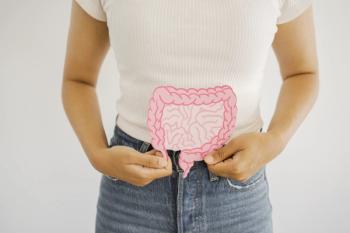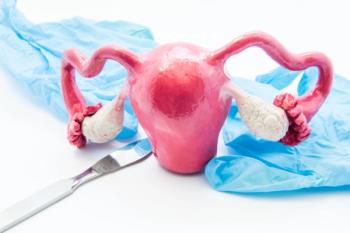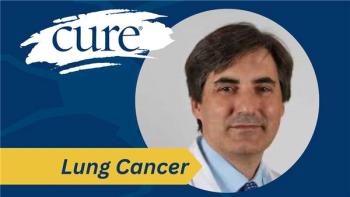
Specific Gene Mutations Plus Childhood Chest Radiation Increase Risk for Adult Breast Cancer
Girls treated for cancer with radiotherapy in their childhood may grow up to have a higher risk of developing breast cancer if they have certain genetic mutations.
It’s well established that chest radiotherapy to treat a childhood cancer increases the risk of breast cancer in adulthood for female survivors. Now, a study indicates that the risk is highest for women with either of two inherited genetic mutations.
The specific variants were found to increase breast cancer risk only in women who received chest radiotherapy doses of 10 gray (Gy) or higher, reported Lindsay M. Morton, a senior investigator with the National Cancer Institute’s Radiation Epidemiology Branch, during the 2016 Annual Meeting of the American Association for Cancer Research held April 16-20 in New Orleans.
A variant at position q41 on chromosome 1 was associated with nearly a twofold increase in risk, Morton said, and one at position q23 on chromosome 11 was associated with a nearly threefold increased risk for each copy of the risk alleles. These variants did not increase breast cancer risk in survivors who had not received radiotherapy to the chest as part of their cancer treatment, however.
Morton said the findings, if elucidated and confirmed in subsequent studies, have the potential to impact cancer and survivorship care for the nation’s growing number of childhood cancer survivors, currently estimated to number 420,000 — particularly the women among them.
“This is the first study that provides evidence that germline genetics outside the context of high-risk syndromes can modify the risk for breast cancer in childhood cancer survivors treated with chest radiation therapy,” said Morton. “In addition, for patients who have already been treated, the results could be used to identify the survivors who have the highest risks of developing breast cancer and therefore might benefit the most from screening.”
Morton and colleagues conducted genomic DNA analyses of more than 3,400 blood or saliva samples drawn from two large groups of childhood cancer survivors who had been followed for a median 25 years: the Childhood Cancer Survivor Study, which includes children diagnosed with cancer between 1970 and 1986 from 26 participating institutions, and the St. Jude Lifetime Cohort, which includes children diagnosed between 1962 and 2001, all of whom were treated at St. Jude’s. Morton said the two cohorts were data-rich, because germline DNA had been collected and access to the survivors’ medical treatment records were available.
Of the 207 breast cancer cases diagnosed across the two cohorts, the majority (65 percent) had Hodgkin lymphoma as their first primary childhood cancer, 10 percent had leukemia and the remaining had a mix of other childhood cancer types.
Nearly 17 million high-quality genotyped or imputed variants were available across both of the study cohorts, and investigators compared the genotypes for survivors who developed breast cancer with those who did not.
“About two-thirds of the cases had at least 10 Gy of radiation to their breasts during the course of their childhood cancer radiotherapy,” Morton noted. She added that the median age of breast cancer diagnosis in the population was 39. “These are breast cancer cases that are being seen at a much younger age than you would see in the general population.”
Morton explained the mechanisms behind the two single-nucleotide polymorphisms (SNPs, or “snips”) found to be implicated in increasing breast cancer risk in the ≥10 Gy group. The chromosome 1 marker, PROX1, is involved in embryonic development, cellular proliferation and migration, and alterations are present in about 13 percent of breast tumor cells, Morton said. The chromosome 11 marker, TAGLN, is involved in cellular migration and is overexpressed in breast tumors compared with normal breast tissue.
“Our top association was for a marker on chromosome 1q41 … there was a very significant difference in the genotype distribution at this particular location among the childhood cancer survivors who developed breast cancer compared with those who did not,” said Morton. “The relative risk for developing breast cancer was nearly twofold for each copy of the risk allele … but there was no effect on risk among childhood cancer survivors who had not received chest radiotherapy.”
Similar results were seen for the marker on chromosome 11q23, Morton noted, but “unlike the chromosome 1 snip, which was a relatively common one, the chromosome 11 snip was a relative rare marker,” only present in 2 to 3 percent of controls. This snip conferred about a 2.6-fold increased risk for breast cancer, again restricted to those childhood cancer survivors who had received at least 10 Gy of radiation to the breast, Morton continued.
Morton cautioned that, because they were generated in a “discovery” study, these early findings will require replication before evaluation in the clinic. “The road ahead will be long, winding and a little bit of an uphill climb,” she said.
Among the unanswered questions, she said, is the relationship between the genotype and the risk from the lower radiation levels patients are typically treated with today. “Patients today often receive lower treatment doses and lower treatment volumes than those who were treated in the past and were part of these two childhood cancer survivor cohorts,” she said.
Other factors to consider include the effect of the child’s age at treatment and whether an individual’s breast cancer molecular subtype affects the level of increased risk.
“Once all of this work is done — the laboratory studies and additional replication — we think that these studies have tremendous potential for the future,” concluded Morton. “There is the possibility that understanding genetic susceptibility could impact frontline therapy decisions. It may alter the risk-and-benefit calculation for receipt of radiotherapy for a childhood cancer patient who is being diagnosed today.”
“For the many survivors who are already out there, these data also could impact the screening recommendations,” she continued.
“Today, the Children’s Oncology Group recommends annual dual-modality screening for childhood cancer survivors who were treated with chest radiotherapy beginning at age 25 or eight years after treatment, whichever is later. If germline susceptibility confers different levels of risk, then perhaps we can use this inherited susceptibility to identify those who would benefit the most from the screening.”
Morton LM, Sampson JN, Armstrong GT, et al. Genome-wide association study identifies two susceptibility loci that modify radiation-related risk for breast cancer after childhood cancer: a report from the Childhood Cancer Survivor Study and St. Jude Lifetime Cohort. Presented at the 2016 Annual Meeting of the American Association for Cancer Research; April 16-20; New Orleans, Louisiana. Abstr





